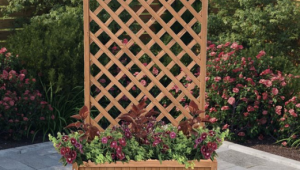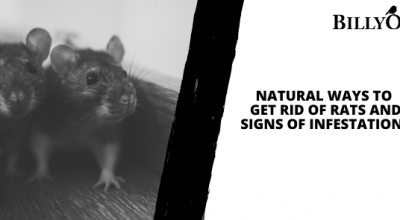Jump to:
No matter if you grow in a greenhouse or not, potted fruit trees look amazing. They also give you an incredible harvest all year long. Potted fruit trees can be placed onto decking, patio, a balcony or even concrete. Growing potted fruit trees is far easier than you’d imagine!
If you’re looking to pot your own fruit tree, then here are some incredible tips on how to do so:

Choosing Smaller Varieties
Full-sized varieties of fruit trees are often impossible to grow in pots. This means that finding dwarf, or semi-dwarf sized trees would be a better option. As they grow, you’ll need to keep moving them into larger sized pots. This allows your fruit tree to keep growing.
Here are some of the great fruit tree varieties you can pot:
Cherries – Sweet varieties require a lot of sun, whilst sour cherries require more shade. It’s important you water these during dry spells. The roots on these plants are shallow. Gisela 5 is a great sweet variety, whilst Colt is great for a sour choice.
Apples – Apple varieties that are considered dwarf varieties are great as potted fruit trees. These require cross-pollination so having space for more than one apple tree is a must. If this isn’t possible, have a look at some self-fertile apple trees.
Plums – Similar to apples, plum trees require more space. Make sure to choose a self-fertile tree if space isn’t available. These trees need well-draining soil. Try adding sand or perlite to your potting blend!
Raspberries – Raspberries are great if you have less space. Although they’re not considered a tree, raspberries growing from lone canes can give that effect. They come in both summer and autumn varieties which you can grow in pots.
Peaches – Dwarf trees are perfect potted fruit trees. You can easily protect their sensitive flowers from cold and harsh spells. These should be repotted every two years. Ideal varieties include Bonanza, Pixy and St. Julien.

Choosing a Good Container
The pot you choose will need to be no smaller than 20 inches in diameter or bigger. This will cause your plant to have trouble growing. It’s best to choose a ceramic, high-quality plastic, terra-cotta or wooden pot. This should be 20 inches or wider when growing a fruit tree.
Choosing a lightweight option will be easier to move, especially with the tree in. Try choosing a plastic pot if this is the case. Just make sure it’s high quality, or else this could break easier.
When you’re moving your potted tree, you could also use a wheeled planter to help you move it easier. You will also need to move your plant into a sheltered area (such as a garage or shed) during the winter months. This will protect the plant and prevent the container from freezing.
TIP: Find a pot with good drainage holes to allow excess water to seep through.

Choosing Appropriate Potting Soil
To successfully grow a potted fruit tree, you’ll need to carefully choose the type of soil you use. Although it’s convenient, garden soil isn’t the best choice. This is for a number of reasons, such as:
- Poor drainage
- The soil is too heavy
- This soil can come with insects and weeds
Creating a good-quality potting blend isn’t hard at all and can be done yourself! Take some of your soil, add nutrients such as bone meal, blood meal or bat guano. You could also mix up one part sand, one part peat moss and one part perlite or vermiculite.

Potting a Fruit Tree
Step 1: Putting soil into your container
Start by adding the potting mix into your container. Firm the soil and then moisten it slightly, using water. To create a base for the roots, mound up the middle of the soil.
Step 2: Preparing your fruit tree
Remove your tree from its nursery pot. Tip the plant gently and then loosen the tree slowly. Never pull your tree by its branches. Then tease the roots apart. You could also use a water hose to rinse the soil out of the roots. Then trim off any damaged or overly long roots.
Step 3: Setting the tree
Next centre your fruit tree into the mound you first created using a straightedge. Then, drape the plant’s roots down around the solid mound. Your tree’s graft union should be placed just above the top level of your soil. You can adjust the mound to fit if needed.
Step 4: Backfilling
Once your tree is set, fill your pot with soil around the roots and up to the graft union. It’s best to work as quickly as possible with this. You don’t want to leave the roots exposed for too long.
Step 5: Watering
Then water the soil and let it drain. This will eliminate any air pockets around the roots of your fruit tree. You can always add more potting mix if the soil gets too low. Just make sure to water this too.
Step 6: Adding support
Young potted fruit trees will need support. Use a bamboo stick and a 1×1 trellis anchored to the pot to support the tree. Then tie the tree loosely to the bamboo stick to keep it upright.
Now all of this is done, you can sit back and expect a bountiful harvest soon. Just make sure to maintain your potted plants. You can also keep an eye out for various plant diseases to make sure your plants are kept healthy.
FAQ
What types of trees grow well in pots?
Dwarf trees and smaller fruit trees are perfect for growing in pots. This is because they fit better. You need to move your plants into bigger pots as they grow though, this makes sure they keep producing fruit.
Can trees survive winter in pots?
Yes, they can. It’s recommended that you move any sensitive plants into a greenhouse or shed during winter however to stop the pots from freezing.
What potted plants do well in full sun?
Plants such as sweet cherries are perfect for full sun. There are various other plants that do well in the sun! You just have to find the right one for you.
Do plants grow better in small pots?
The pot you choose has to be at least 20 inches in diameter minimum for your plant to grow well.













What do you think ?